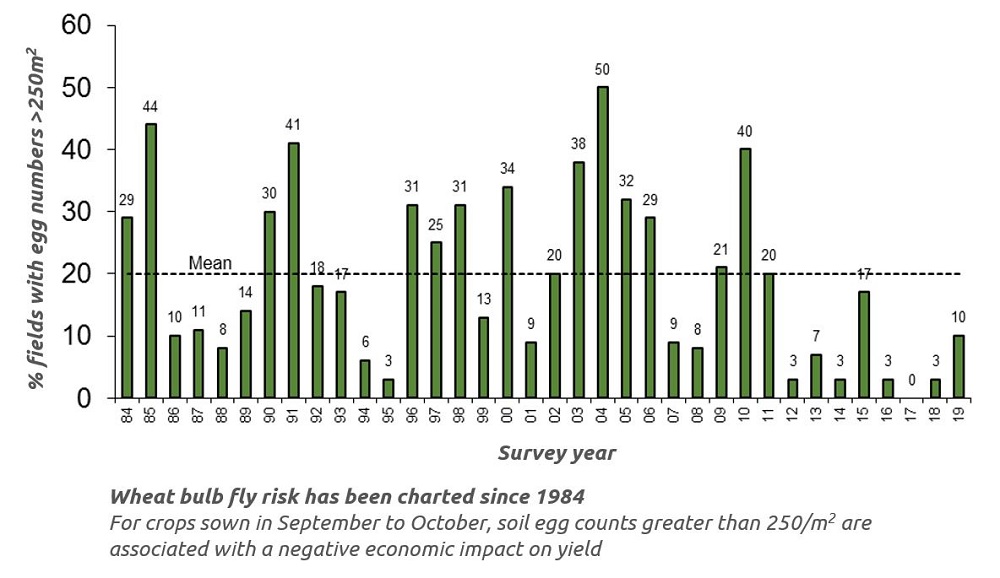Wheat bulb fly pressure ‘very high’ at some monitoring sites
Thursday, 3 October 2019
Wheat bulb fly egg counts are generally low but the trend has been bucked at some monitoring sites, according to results from the AHDB autumn survey of this cereal pest.
Conducted by ADAS, the survey uses soil samples from 30 fields, split equally across sites located in the East and North of England that are prone to attack, to calculate the number of pest eggs per square metre.
The results can indicate whether treated seed could potentially reduce the risk of unacceptable crop losses.
Egg counts at seven of these sites (four in the East and three in the North) exceeded the 100/m2 seed treatment threshold, which applies to late-sown (November to December) winter wheat crops. Two of these sites (both located in Cambridgeshire) had ‘very high’ counts (>500 eggs m2).
Chemical control is limited to seed treatments, with thresholds as follows:
- Early sown winter wheat crops (before November) are unlikely to benefit from seed treatment, as they have more time to tiller and are better able to withstand attack. Egg populations greater than 250/m2 are considered likely to result in a negative economic impact on yield. However, seed treatments lack persistence to protect such crops
- For late-sown winter wheat crops (November to December), consider seed treatments where populations exceed 100 eggs/m2
- For late-winter/spring-sown crops (January to March), consider seed treatments irrespective of the population size (unless no eggs are present)
Charlotte Rowley, who manages pest research at AHDB, said: “At this time of the year, if egg counts are very high, the least risky option is to avoid winter wheat. Growers could opt for a non-cereal or sow a spring cereal crop late, after March, instead.
“Of course, winter oats are also an option, because they are not vulnerable to wheat bulb fly. Where wheat is drilled between November to March, seed treatment thresholds should be followed.”
Access survey results and threshold information via the dedicated AHDB web page: ahdb.org.uk/wbf

Topics:
Sectors:
Tags:


